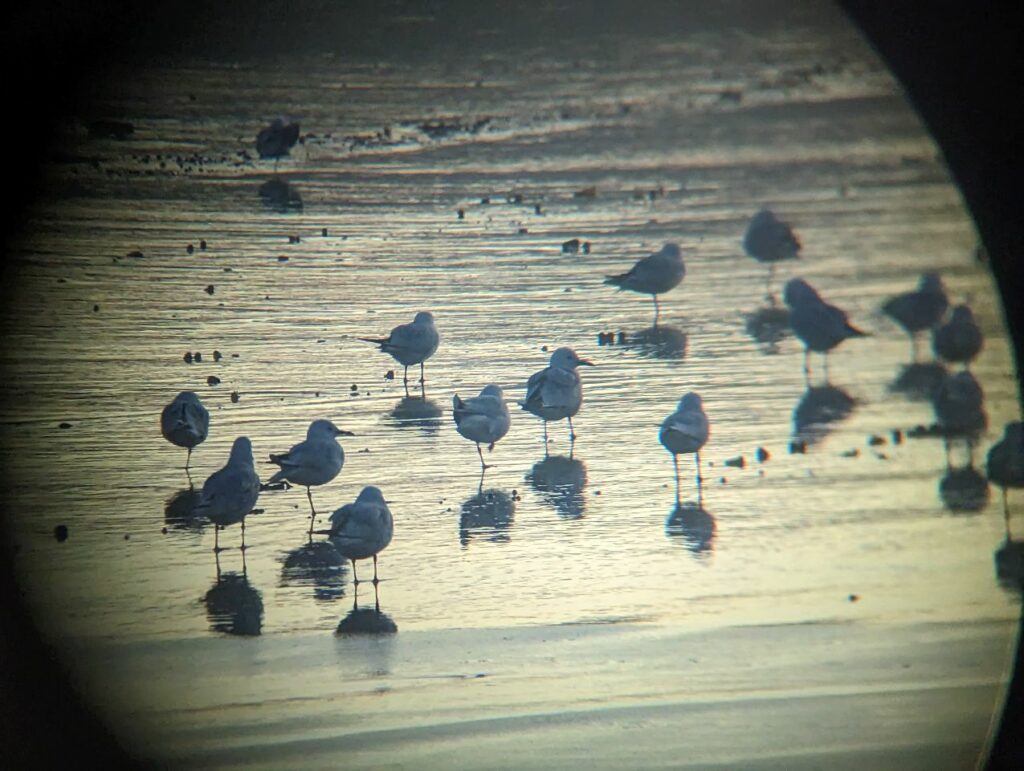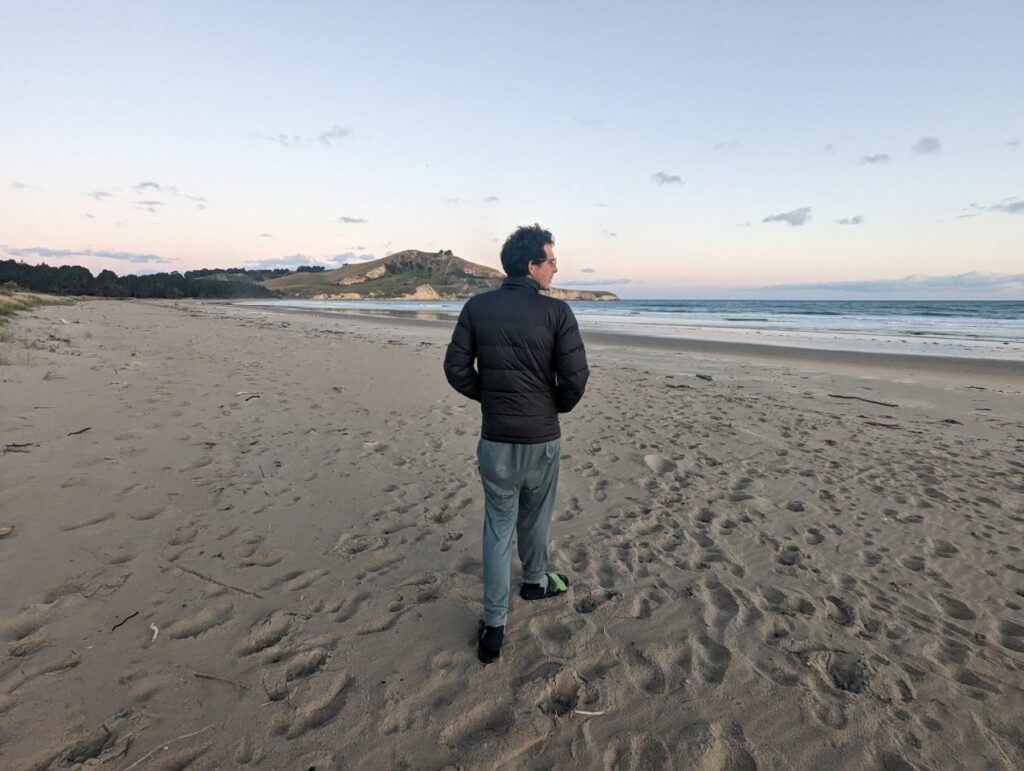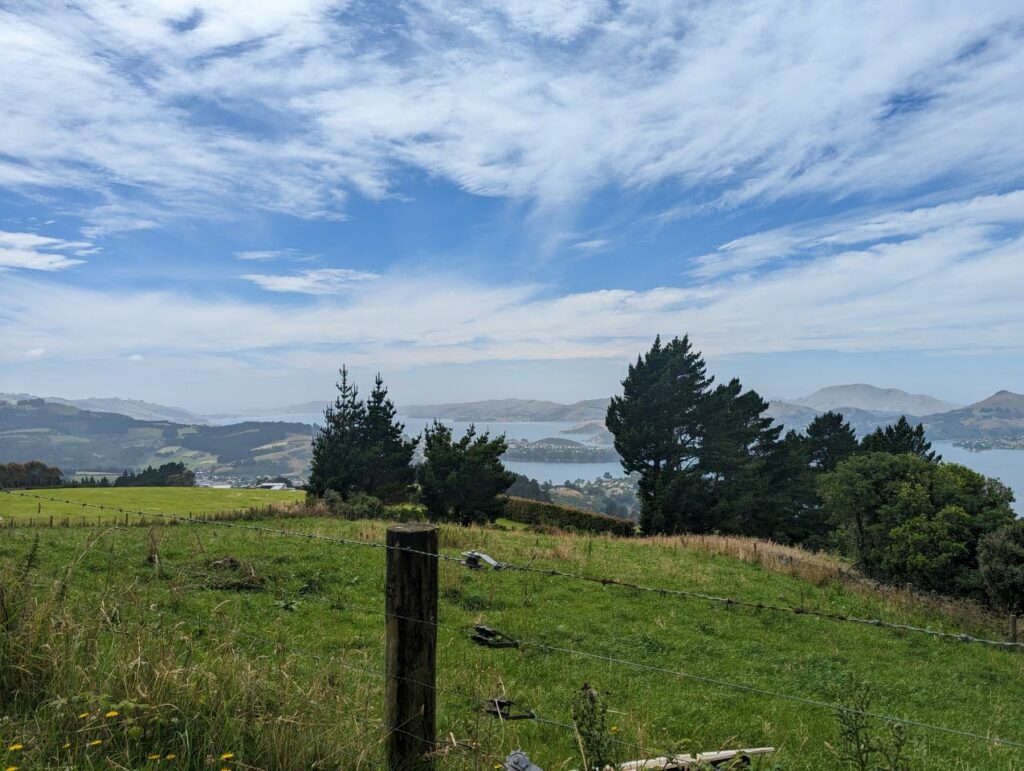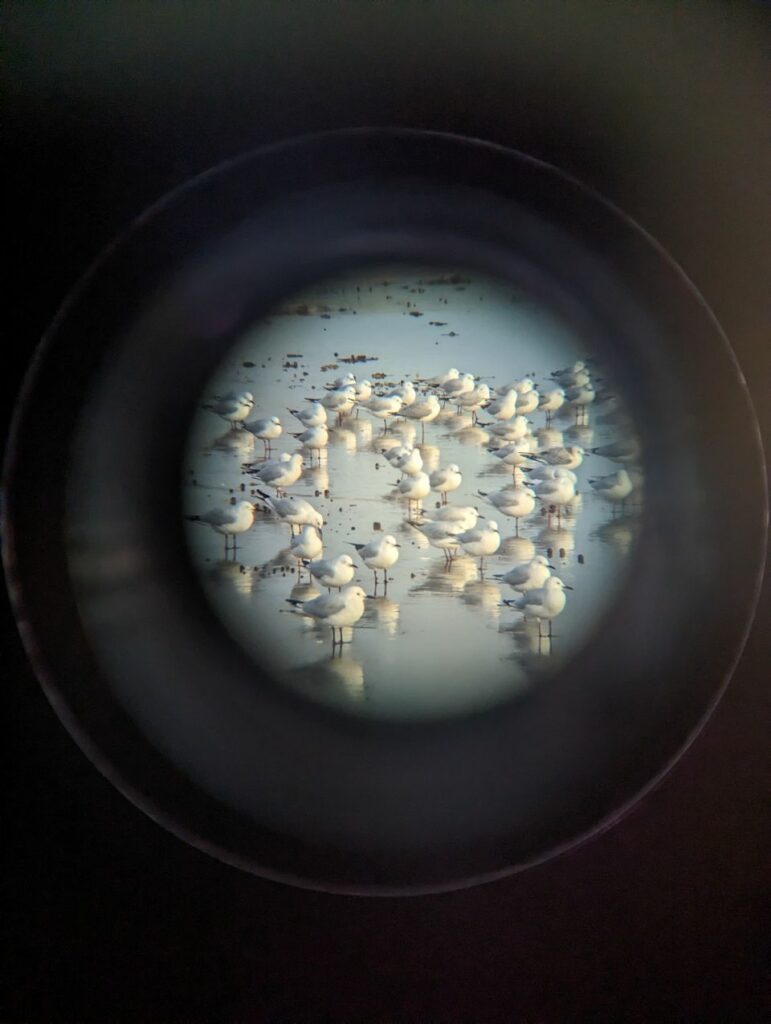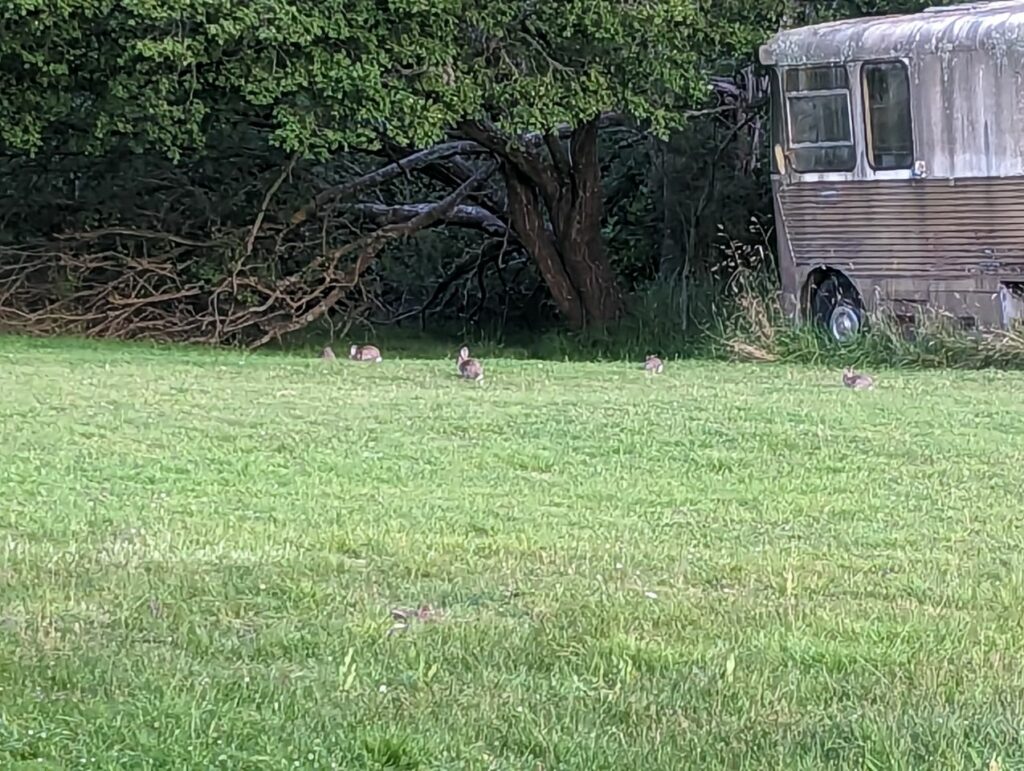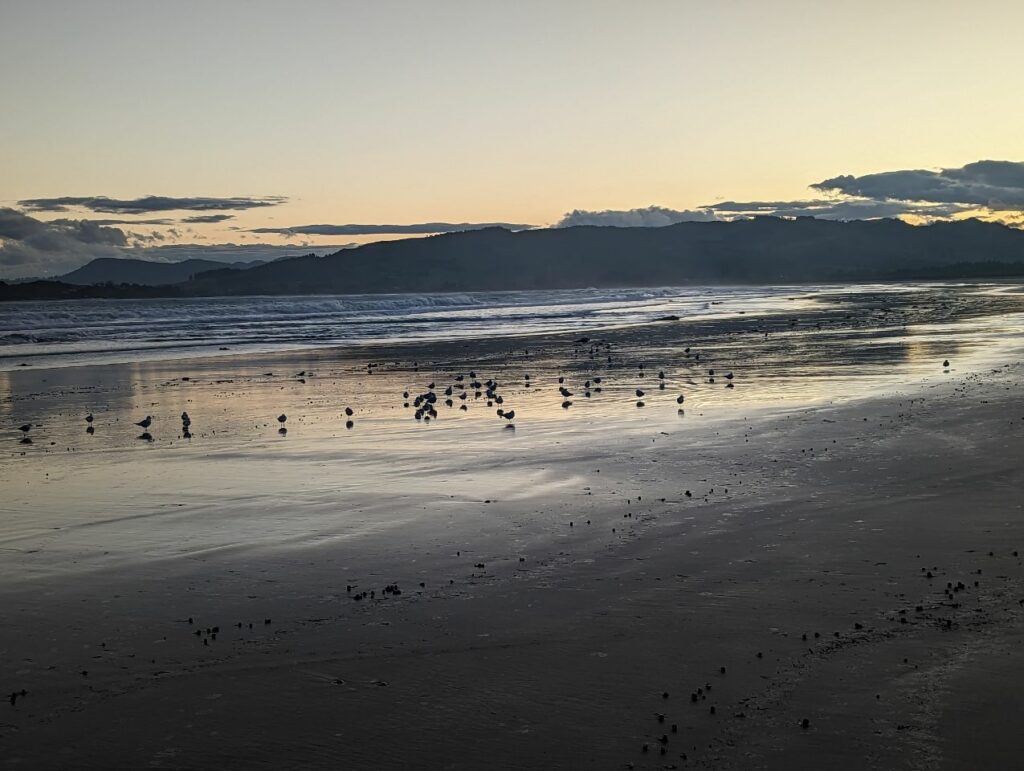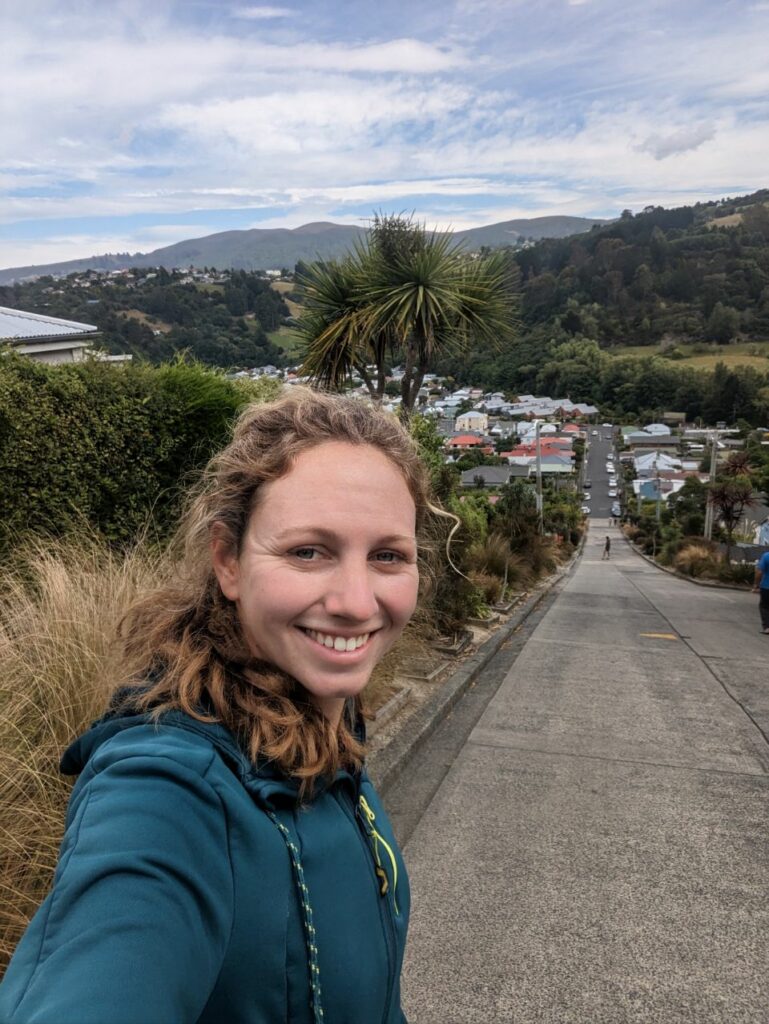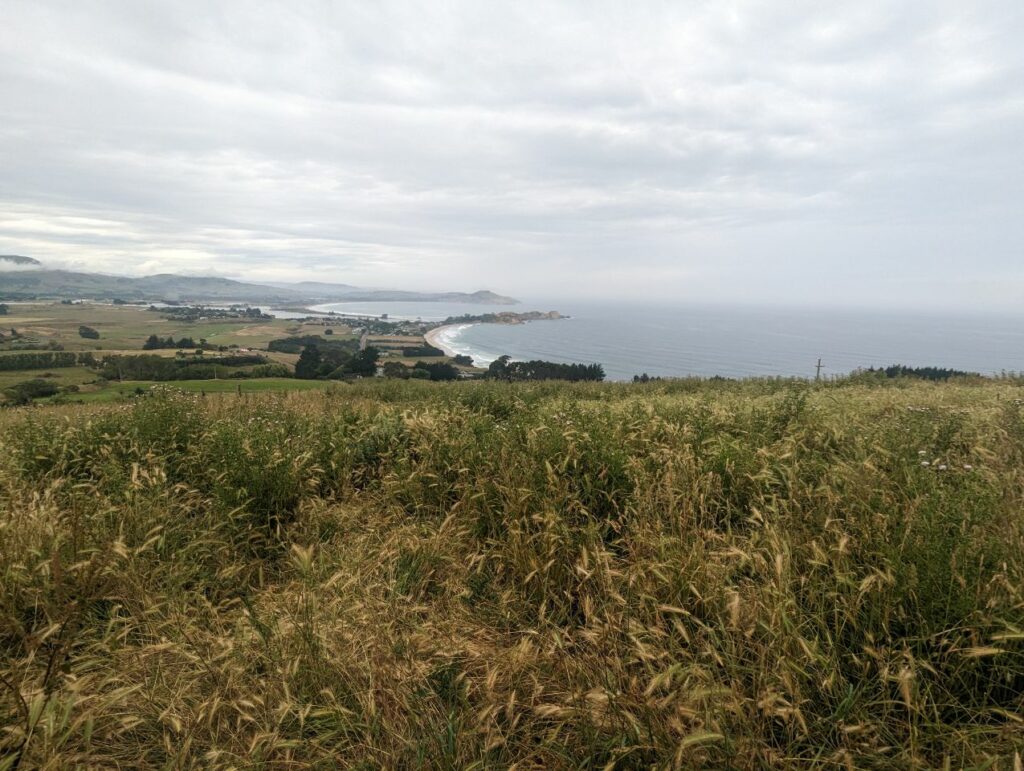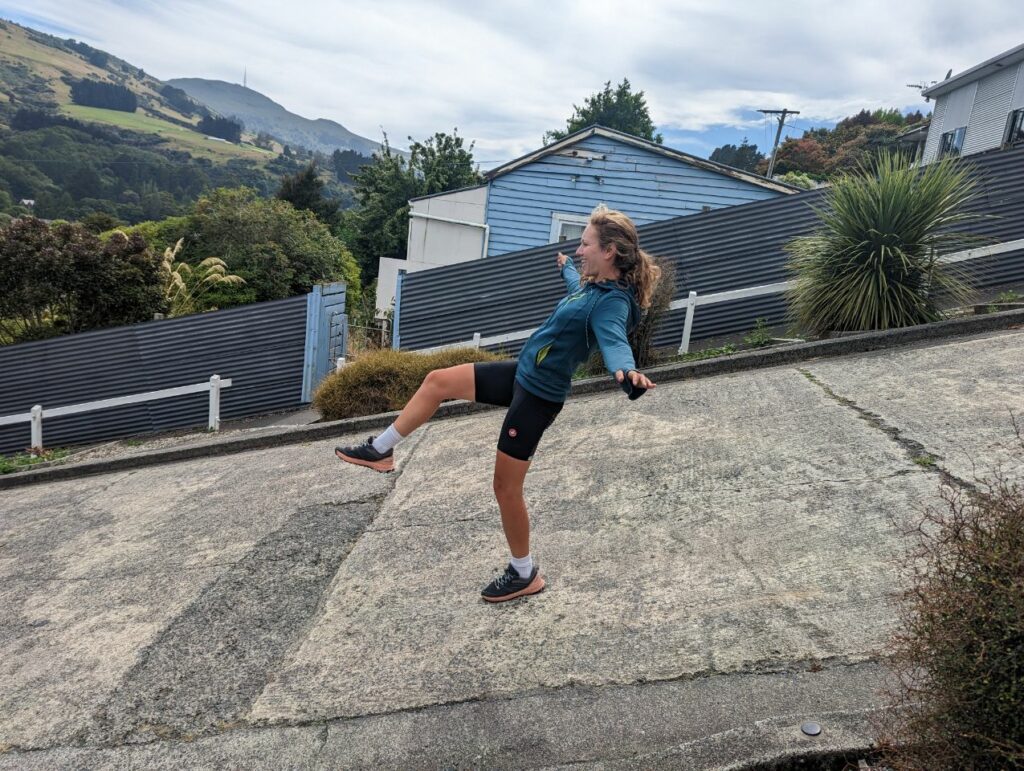Petite journée de 50 km aujourd’hui ! Mais avec une sacré montée En partant de Dunedin on passe voir la rue dite la plus pentue du monde et effectivement elle est sacrément pentue presque 30% ( on n’ose même pas la tenter à vélo) On reprend la route ensuite et on se prend une sacré montée (des locaux nous avait prévenu que c’était bien pentu et qu’il fallait mieux faire le tour même si c’est plus long mais étant têtus on a quand même continué et on a fini par pousserr pendant 1 km ^^) Pause à Waiti pour manger et on va dans les toilettes publiques élu les 2éme les plus originales de NZ ( oublié de les prendre en photo) On reprend la route ensuite avec pas mal de montée Fin à Waikouaiti sous la.pluie Petite balade digestive sur la plage avec le soleil qui est revenu
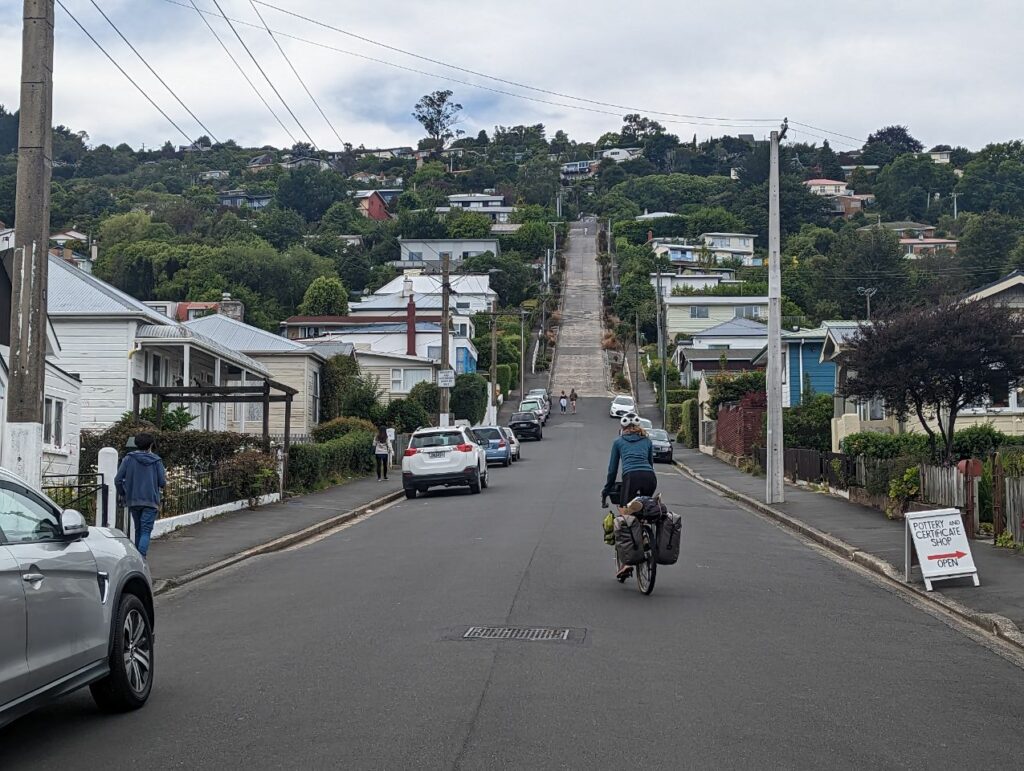
WAIKOUAITI
20 JANUARY 2023
Waikouaiti is a small town in East Otago, New Zealand, within the city limits of Dunedin. The town is close to the coast and the mouth of the Waikouaiti River.
Today, Waikouaiti is a retail trade and servicing centre for the surrounding district, which has sheep farming as the principal primary activity. A major egg producer, Zeagold Foods, a branch of Mainland Poultry LTD has a 500,000-hen factory farming operation here and is in the process of expanding over the next year to meet demand for egg products. Hawksbury, 3 km southwest of Waikouaiti, has a cheese factory and shop, a swimming pool and housing developed from the old mental health institution, Cherry Farm. Karitane, 3 km to the southeast has a small fishing port.
History[edit]
Prior to the arrival of Europeans the area was occupied by Māori, who had a kaik, or unfortified settlement, at modern Karitane and a pa, or fortified settlement, on the adjacent Huriawa Peninsula.

An 1826 sketch of the east Otago coast, shows the headlands and beaches of what are now Karitane and Waikouaiti.[4]
Waikouaiti was the first European settlement in southern New Zealand to be mainly based on farming and one of the first enduring European settlements in Otago. From 1837 there had been a whaling station confusingly also called « Waikouaiti » nearby on the south side of the estuary at what is now called « Karitane ». Having already purchased large areas of land in the South Island (much of which was later declared to have been invalid) Johnny Jones sent settlers from Sydney, Australia in the Magnet to farm the district in 1840, eight years before the foundation of the Otago Association’s settlement.[5] This was the first farm in the Otago region.
Jones himself did not move to Waikouaiti until 1843, after financial losses during an economic depression in Sydney. His original homestead and some of the associated buildings of his colonial manor farm, known as Matanaka Farm, which still stand on Cornish Head, date from this time. The farm buildings, though not the homestead, are owned by Heritage New Zealand and are open to the public. They are the oldest surviving farm buildings in New Zealand.[6][7]
Jones moved to Dunedin in 1854[5] but was influential in the development of Waikouaiti for many years after. The wooden shingle roofed St. John’s Anglican Church in Waikouaiti proper opened in 1858, was funded by Jones. It was designed by Benjamin Mountfort of Christchurch who also designed the Provincial Council Building there. In 1861 Dr. William Chapman, at Jones request, became the first GP for the district.
The Presbyterians built a wooden church in 1863. It was moved to Kildare Street in 1876 and still remains. It became the Sunday School when a brick church was built in 1914, designed by J.Louis Salmond but this building closed in 2008 and was demolished in 2009.

